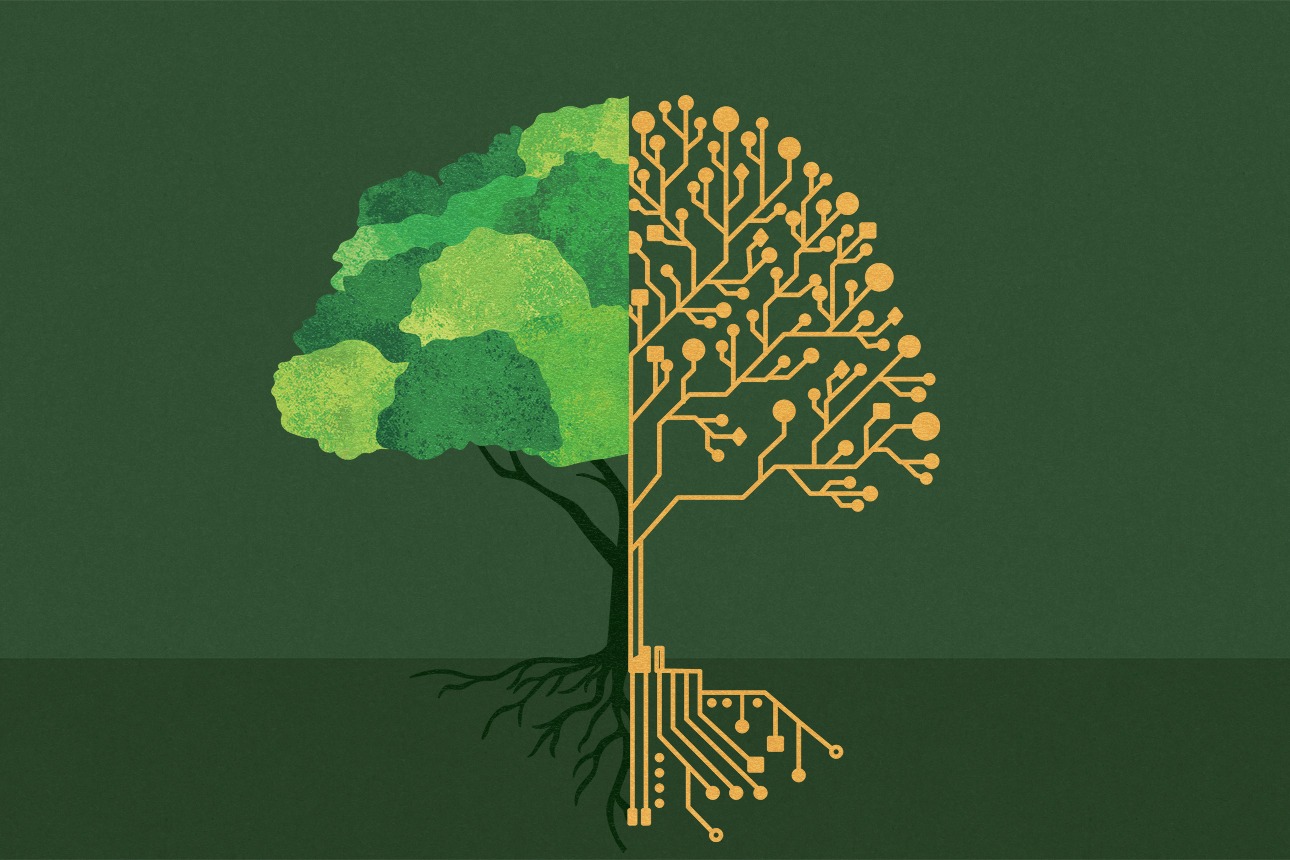
The Hidden Energy Cost of Streaming and Data.
As digital streaming and online data usage skyrocket, the unseen energy demands behind every click, video, and download are massive. From data centers and servers to networks and devices, our convenience comes at a hidden environmental cost. This article explores the true energy footprint of streaming, its contribution to carbon emissions, and strategies for a more sustainable digital future.
✨ Raghav Jain

The Hidden Energy Cost of Streaming and Data
In today’s hyper-connected world, streaming and digital data have become as essential as electricity and water. Whether it’s binge-watching on Netflix, gaming on the cloud, scrolling through TikTok, or attending virtual meetings, our daily lives depend heavily on the seamless flow of digital information. However, behind every click, stream, and download lies a vast and often invisible network of data centers and communication systems that consume enormous amounts of energy. While digital technology may seem clean and weightless, it has a carbon footprint that rivals—and in some cases exceeds—traditional industries.
The Myth of the “Weightless” Internet
Many people imagine the internet as an ethereal space floating in the “cloud.” But in reality, that cloud is grounded in massive data centers—warehouses filled with thousands of servers running 24/7. These machines store and transmit our emails, social media posts, and streaming content. To keep them operational, they require not only electricity to process data but also extensive cooling systems to prevent overheating.
According to the International Energy Agency (IEA), data centers and data transmission networks account for about 1–1.5% of global electricity consumption—a figure roughly equivalent to the energy usage of an entire developed country such as Australia. And this number continues to grow as global internet traffic doubles every two to three years.
Streaming alone is a major contributor. In 2022, online video streaming accounted for over 60% of all internet traffic. That’s billions of hours of content being transmitted daily across servers, routers, and devices. Each hour of video streamed in HD consumes around 2–3 gigabytes of data, and streaming in 4K quadruples that demand. Behind this convenience lies a silent but significant drain on energy resources.
What Happens When You Stream
When you click “play” on a Netflix show or YouTube video, a complex process begins almost instantaneously. The data file is retrieved from a remote data center—potentially thousands of miles away—broken into packets, and sent through a web of fiber-optic cables, cellular networks, and local Wi-Fi routers before appearing on your screen. Each stage of this journey consumes electricity:
- Data Centers: Store and process content. They need constant power and cooling.
- Transmission Networks: Move data through undersea cables, routers, and switches.
- End-User Devices: Phones, TVs, and computers decode and display the content.
While each individual action seems trivial, the global scale makes it monumental. For instance, Netflix users worldwide collectively stream over 400 million hours of content every day. The cumulative energy demand behind this activity is staggering.
The Carbon Footprint of Streaming
The carbon cost of streaming varies depending on several factors: the device used, the resolution, and the power source of the data center. Streaming on a large smart TV consumes far more energy than on a smartphone. Watching in 4K can emit up to four times more CO₂ than watching the same video in standard definition.
A 2019 report by Shift Project, a French think tank, estimated that online video streaming alone produces more than 300 million tons of CO₂ per year, equivalent to the annual carbon emissions of Spain. Though some estimates have since been refined and criticized for overgeneralization, the underlying truth remains: digital data, particularly video, is a major and growing source of greenhouse gas emissions.
To put it in perspective:
- Watching one hour of HD video on Netflix emits about 100–200 grams of CO₂, depending on the energy source.
- Downloading music or streaming audio may seem small, but globally it adds up to tens of thousands of tons of CO₂ annually.
- Cloud gaming platforms like NVIDIA GeForce Now and Xbox Cloud Gaming are even more energy-intensive, as they require high-performance servers to render graphics remotely in real-time.
The Global Infrastructure Behind Data
Every byte of data relies on physical infrastructure—servers, fiber-optic cables, and wireless towers. Data centers are the backbone of this system, and there are over 8,000 major data centers worldwide. Tech giants like Google, Amazon, and Microsoft run vast server farms that each consume as much electricity as small cities.
Many of these data centers are strategically located in cooler climates such as Scandinavia to reduce cooling costs. However, the growth of AI, cloud computing, and 4K/8K streaming is rapidly increasing demand for more centers. AI operations, in particular, are pushing data energy use to new heights, as machine learning models require enormous processing power.
The Role of Renewable Energy and Green Data Centers
To mitigate their impact, companies are now investing heavily in renewable energy and energy-efficient technologies. Google claims to have matched its entire annual electricity consumption with renewable energy purchases since 2017. Apple and Microsoft have also committed to running all data centers on 100% renewable energy.
Moreover, new cooling technologies—such as liquid cooling, immersion cooling, and AI-driven climate control systems—are improving data center efficiency. Some companies are even using the waste heat generated by servers to warm nearby homes or buildings.
Still, challenges persist. Renewable energy availability can fluctuate, and energy demand from streaming and AI continues to grow faster than efficiency improvements can offset.
The Hidden Cost of “Free” Internet Services
Social media platforms, cloud storage, and even simple web searches consume energy too. For example:
- Each Google search uses about 0.3 Wh of electricity—tiny per search, but multiplied by 8.5 billion searches daily, it becomes immense.
- The endless scroll on social media platforms like Instagram and TikTok involves data being continuously loaded, cached, and transmitted, consuming energy every second.
- Cloud storage, though convenient, means your personal photos and documents are stored on always-on servers somewhere in the world.
These services may feel “free,” but they have a hidden ecological price tag that society rarely acknowledges.
Individual Actions to Reduce Digital Energy Use
While systemic change from tech companies is vital, individuals can also play a meaningful role in reducing digital energy consumption. Here are some effective steps:
- Lower Streaming Resolution: Watching in 720p instead of 4K can cut energy use by more than half.
- Download Instead of Stream: Repeatedly streaming the same song or show consumes more energy than downloading it once.
- Use Wi-Fi Instead of Mobile Data: Mobile networks consume more energy per gigabyte than wired connections.
- Turn Off Autoplay and Background Apps: Reduces unnecessary data transfer.
- Support Green Tech Companies: Choose platforms committed to renewable energy and transparent sustainability practices.
Small individual changes, when multiplied by millions of users, can significantly reduce the digital carbon footprint.
The Future of Sustainable Streaming
The digital industry is now waking up to its environmental responsibility. Technologies like edge computing (processing data closer to the user), AI-based load management, and next-gen compression algorithms are being developed to make data transmission more energy-efficient.
Streaming services are also experimenting with eco-modes that automatically adjust video quality based on device type or network efficiency. Meanwhile, governments are pushing for greener data infrastructure through carbon regulations and energy-efficiency standards.
If these innovations continue to mature, the internet of the future could be far cleaner and more sustainable than today’s. However, true progress will depend on global cooperation between tech giants, governments, and users.
In the age of digital convenience, where entertainment, communication, and information are accessible with a single click, few of us stop to consider the immense, invisible energy system that powers our virtual world. Every moment spent streaming a movie, scrolling social media, attending an online meeting, or even searching on Google triggers a vast network of servers, routers, fiber-optic cables, and wireless towers that consume staggering amounts of electricity. This invisible consumption—the hidden energy cost of streaming and data—represents one of the fastest-growing environmental challenges of our time. The myth of a “cloud-based,” weightless internet is comforting but far from reality. In truth, that cloud is made up of colossal data centers, physical infrastructures that store, manage, and transmit digital content around the globe. These data centers, often located in massive warehouses filled with thousands of servers, run continuously day and night, requiring not only power to function but also enormous energy for cooling to prevent overheating. According to the International Energy Agency (IEA), global data centers and transmission networks consume roughly 1–1.5% of the world’s total electricity, comparable to the annual energy usage of countries like Australia or Spain. The numbers become even more striking when considering that streaming alone accounts for over 60% of all internet traffic, with online video platforms like YouTube, Netflix, and TikTok transmitting billions of gigabytes of data daily. When you hit “play” on your favorite show, the file doesn’t simply appear—it’s retrieved from a data center (possibly thousands of kilometers away), broken into millions of packets, and transmitted through a complex system of undersea cables, fiber-optic lines, and wireless towers before arriving on your screen. Each part of this process—from the server that stores your content to the device that displays it—consumes energy. Data centers run the hardware, transmission networks deliver it, and your device decodes and plays it. While the electricity use of one stream may seem negligible, multiplied by millions of users worldwide, it results in astronomical energy demands. For instance, it’s estimated that global Netflix users collectively stream more than 400 million hours of content every day—each hour of HD video consuming about 2–3 gigabytes of data and emitting between 100 and 200 grams of carbon dioxide, depending on local energy sources. Streaming in 4K, which is becoming increasingly common, requires up to four times more energy than standard definition, dramatically increasing emissions per viewer. In total, researchers from The Shift Project, a French think tank, estimated in 2019 that online video streaming alone generates over 300 million tons of CO₂ annually—nearly equivalent to the total emissions of the entire country of Spain. Even if that estimate is debated, the underlying truth is undeniable: the digital entertainment we enjoy every day carries a significant environmental cost. Beyond streaming, the broader data ecosystem contributes heavily as well. Every Google search, every photo backed up to the cloud, and every social media post or email stored online consumes small amounts of energy, which collectively become massive. A single Google search requires about 0.3 watt-hours of electricity—trivial per use but multiplied by more than 8.5 billion searches per day, it amounts to an enormous daily global energy load. Likewise, the photos, videos, and documents stored in cloud services like iCloud, Dropbox, or Google Drive reside in servers that must stay powered 24/7, even if the files aren’t accessed for months or years. Each of these digital conveniences is underpinned by tangible physical infrastructure that demands power, cooling, and maintenance. As the internet grows exponentially—fueled by high-definition video, artificial intelligence, and cloud computing—the strain on global energy systems intensifies. Today, there are more than 8,000 large-scale data centers worldwide, some the size of multiple football fields, each consuming as much power as a small city. To cope with this, many companies have moved their data centers to cooler regions like Scandinavia, where natural temperatures help reduce cooling costs. Yet even with these optimizations, the increasing demand for high-performance computing, particularly for AI model training and cloud gaming, threatens to outpace efficiency gains. Cloud gaming platforms such as Xbox Cloud Gaming or NVIDIA GeForce Now are especially energy-hungry, since every gaming session requires powerful servers to render graphics remotely in real-time before transmitting the visuals to the player’s device. Despite these challenges, technology companies are increasingly recognizing their environmental responsibilities. Industry giants like Google, Apple, and Microsoft have pledged to achieve carbon neutrality and run all data centers on renewable energy. Google claims to have matched its annual electricity consumption with renewable energy purchases since 2017, while Apple operates its global facilities on 100% clean power. Advances in cooling technology are also helping: liquid cooling, immersion cooling, and AI-optimized climate control systems have made data centers more efficient, while some innovative projects repurpose the waste heat from servers to warm nearby buildings. However, even with these advances, the growing appetite for data means total energy use continues to climb. For individual users, small behavioral changes can collectively make a large difference. Watching videos in lower resolution—say, 720p instead of 4K—can reduce energy consumption by over half. Downloading music or shows once instead of streaming them repeatedly also saves energy by avoiding continuous data transfers. Using Wi-Fi instead of mobile data cuts energy use since mobile networks consume much more power per gigabyte. Simple actions like turning off autoplay, closing unused tabs, and avoiding unnecessary cloud backups can meaningfully lower one’s digital carbon footprint. Supporting tech companies that invest in renewable energy and transparency is another step toward a cleaner internet. Looking ahead, the path to sustainable streaming lies in both technological innovation and collective awareness. Emerging technologies like edge computing (processing data closer to users to reduce transmission energy), improved video compression algorithms, and AI-based energy management systems are paving the way for more efficient data networks. Some streaming services are experimenting with eco-modes that automatically optimize video quality to balance user experience with environmental impact. Governments are also beginning to implement regulations that push for greener digital infrastructure, requiring energy-efficient hardware, transparent carbon reporting, and renewable integration in data operations. Still, achieving a sustainable digital future requires a shared effort. Users must become more conscious consumers of data, companies must continue to innovate responsibly, and policymakers must create frameworks that encourage clean technology growth. The hidden energy cost of streaming and data is one of the defining environmental issues of the digital era—quiet, complex, and often overlooked, yet critical to the planet’s sustainability. Every moment we spend online—watching, sharing, or connecting—draws from a global web of power that, unless managed responsibly, could have lasting ecological consequences. Awareness, innovation, and action together can ensure that our digital world continues to expand without deepening its impact on the physical one.
In today’s hyper-connected world, streaming, cloud computing, and digital data transmission have become ubiquitous in daily life, offering unprecedented convenience, entertainment, and access to information, but beneath the surface of every click, swipe, and play lies an enormous, largely invisible energy footprint that has significant environmental consequences; while many perceive the internet as a “weightless” or ethereal cloud, the reality is that it depends on a vast network of physical infrastructure, including thousands of data centers, millions of servers, fiber-optic cables spanning oceans, wireless towers, and end-user devices, all of which consume electricity constantly, and these energy demands are increasing exponentially as digital consumption grows, particularly in the form of video streaming, which alone accounts for more than 60% of global internet traffic, and with services like Netflix, YouTube, and TikTok transmitting billions of gigabytes of data each day, the scale of energy use is immense; data centers, which house rows upon rows of servers operating around the clock, require not only electrical power to process, store, and retrieve data but also sophisticated cooling systems to prevent overheating, sometimes consuming as much energy as entire small cities, and according to the International Energy Agency, data centers and global data transmission networks together consume approximately 1–1.5% of the world’s electricity, comparable to the energy usage of an entire developed nation such as Australia or Spain, and as global internet traffic doubles roughly every two to three years due to increased demand for high-definition video, cloud gaming, artificial intelligence, and virtual meetings, this energy burden continues to grow; streaming in particular exemplifies the hidden energy costs because every time a video is played, a chain of processes is set in motion, starting from the retrieval of data from a remote data center, which may be thousands of kilometers away, the fragmentation of that data into packets, the transmission through a complex web of undersea cables, routers, and wireless networks, and finally decoding and display on end-user devices like televisions, computers, and smartphones, with each stage consuming significant amounts of electricity; watching one hour of HD video can produce 100–200 grams of CO₂, depending on local energy sources, and streaming in 4K can emit up to four times more, so that when millions of users engage in high-resolution streaming simultaneously, the resulting carbon emissions are enormous, with estimates from The Shift Project in 2019 suggesting that online video streaming alone generates over 300 million tons of CO₂ annually, roughly equivalent to the emissions of the entire country of Spain; beyond video, other digital services also carry energy costs that are easy to overlook, such as Google searches, cloud storage, social media activity, and email exchanges, each consuming small amounts of power individually but adding up to tremendous cumulative energy use on a global scale, for instance, a single Google search uses approximately 0.3 watt-hours of electricity, which seems negligible until multiplied by over 8.5 billion daily searches, highlighting the enormous energy intensity of the seemingly “free” internet; the global infrastructure that supports all digital activity comprises more than 8,000 large-scale data centers worldwide, some occupying areas the size of multiple football fields and consuming electricity comparable to small cities, and the energy requirements of these centers are only expected to grow as streaming in ultra-high-definition, cloud-based gaming, and artificial intelligence applications demand ever-increasing computational power; cloud gaming platforms, such as Xbox Cloud Gaming and NVIDIA GeForce Now, are particularly energy-intensive because they require servers to render complex graphics in real time and transmit the results to users’ devices, resulting in high electricity use for every session, and yet, despite these challenges, technology companies are making significant investments in sustainable energy solutions, with Google, Apple, and Microsoft all pledging to achieve carbon neutrality and run their data centers entirely on renewable energy, with some claiming to have already matched their total annual electricity consumption with renewable energy purchases, while innovations in cooling technology—such as liquid cooling, immersion cooling, and AI-optimized climate management—are further reducing energy consumption in data centers, and in some cases, the waste heat generated by servers is being repurposed to heat nearby buildings, illustrating a growing awareness of the environmental footprint of digital infrastructure; still, individual behavior plays a crucial role in managing the hidden energy cost of streaming and data, as seemingly small choices—like reducing streaming resolution from 4K to 720p, downloading content for offline viewing instead of repeatedly streaming it, using Wi-Fi instead of mobile data to access content, turning off autoplay features, closing background apps, and minimizing unnecessary cloud storage—can collectively make a measurable impact on global energy consumption, and when adopted by millions of users, these strategies could significantly reduce the carbon emissions associated with digital media consumption; furthermore, the future of sustainable streaming relies on a combination of technological innovation, corporate responsibility, and informed user behavior, with emerging solutions such as edge computing, which processes data closer to the user to reduce transmission energy; AI-driven energy optimization that dynamically adjusts server loads, and more efficient video compression algorithms that reduce data size without sacrificing quality all contributing to a lower environmental footprint, while some streaming platforms are experimenting with “eco-modes” that automatically optimize video quality for energy efficiency, balancing user experience with sustainability goals; policy interventions and regulatory measures are also increasingly important, as governments push for greener data infrastructure, enforce energy efficiency standards for hardware, and encourage the adoption of renewable energy in digital operations; however, the overarching challenge remains that digital demand is growing faster than energy efficiency improvements can offset, and unless users, companies, and policymakers act collectively, the hidden energy cost of our digital lifestyles could continue to rise, underscoring the paradox that the very technologies enabling connectivity, entertainment, and communication also contribute significantly to global energy consumption and greenhouse gas emissions; ultimately, while streaming, cloud computing, and online services offer remarkable convenience and utility, they are powered by tangible infrastructure with real-world energy and environmental costs, and awareness of this hidden footprint is the first step toward mitigating it, reminding us that every hour spent online carries implications far beyond our personal devices, connecting us to a global system of energy consumption that demands careful stewardship, responsible technological development, and conscious user behavior if we are to enjoy the benefits of the digital age without exacerbating climate change or depleting valuable energy resources.
Conclusion
Streaming and digital data have revolutionized how we live, work, and entertain ourselves—but their environmental cost is far from virtual. From data centers that consume gigawatts of power to global transmission networks that span oceans, our online habits are powered by real energy drawn from the grid.
While major tech companies are moving toward renewable energy and more efficient infrastructure, the sheer growth of internet traffic threatens to outpace these efforts. Sustainable innovation and conscious user behavior are both essential to reducing the hidden carbon footprint of the digital world.
The next time you click “play,” remember: even a few seconds of streaming connects you to a massive global system humming with energy. Awareness is the first step toward change—and together, digital convenience and environmental responsibility can coexist.
Q&A Section
Q1:- What is the main source of energy consumption in streaming?
Ans:- The main sources are data centers that store and process content, data transmission networks that deliver it, and end-user devices that display it—all of which consume electricity at different stages of the streaming process.
Q2:- How much electricity do data centers use globally?
Ans:- Data centers consume about 1–1.5% of global electricity, roughly equivalent to the energy usage of an entire developed nation such as Australia.
Q3:- Does watching in 4K really make a difference?
Ans:- Yes, streaming in 4K resolution can use up to four times more energy than watching in standard definition, significantly increasing carbon emissions per hour viewed.
Q4:- Are tech companies addressing this issue?
Ans:- Many companies like Google, Microsoft, and Apple are investing in renewable energy, efficient cooling systems, and carbon-neutral operations to reduce their environmental impact.
Q5:- How can individuals reduce their digital carbon footprint?
Ans:- Individuals can lower streaming resolution, download content instead of repeatedly streaming, use Wi-Fi instead of mobile data, turn off autoplay, and choose eco-conscious digital platforms.
Similar Articles
Find more relatable content in similar Articles

The Rise of Digital Twins: You..
Digital twins are transforming.. Read More

The Decentralized Web (Web 3.0..
"Explore the transformative wo.. Read More

The Hidden Energy Cost of Stre..
As digital streaming and onlin.. Read More

Wearable Tech 3.0: From Smartw..
“Exploring Wearable Tech 3.0: .. Read More
Explore Other Categories
Explore many different categories of articles ranging from Gadgets to Security
Smart Devices, Gear & Innovations
Discover in-depth reviews, hands-on experiences, and expert insights on the newest gadgets—from smartphones to smartwatches, headphones, wearables, and everything in between. Stay ahead with the latest in tech gear
Apps That Power Your World
Explore essential mobile and desktop applications across all platforms. From productivity boosters to creative tools, we cover updates, recommendations, and how-tos to make your digital life easier and more efficient.
Tomorrow's Technology, Today's Insights
Dive into the world of emerging technologies, AI breakthroughs, space tech, robotics, and innovations shaping the future. Stay informed on what's next in the evolution of science and technology.
Protecting You in a Digital Age
Learn how to secure your data, protect your privacy, and understand the latest in online threats. We break down complex cybersecurity topics into practical advice for everyday users and professionals alike.
© 2025 Copyrights by rTechnology. All Rights Reserved.